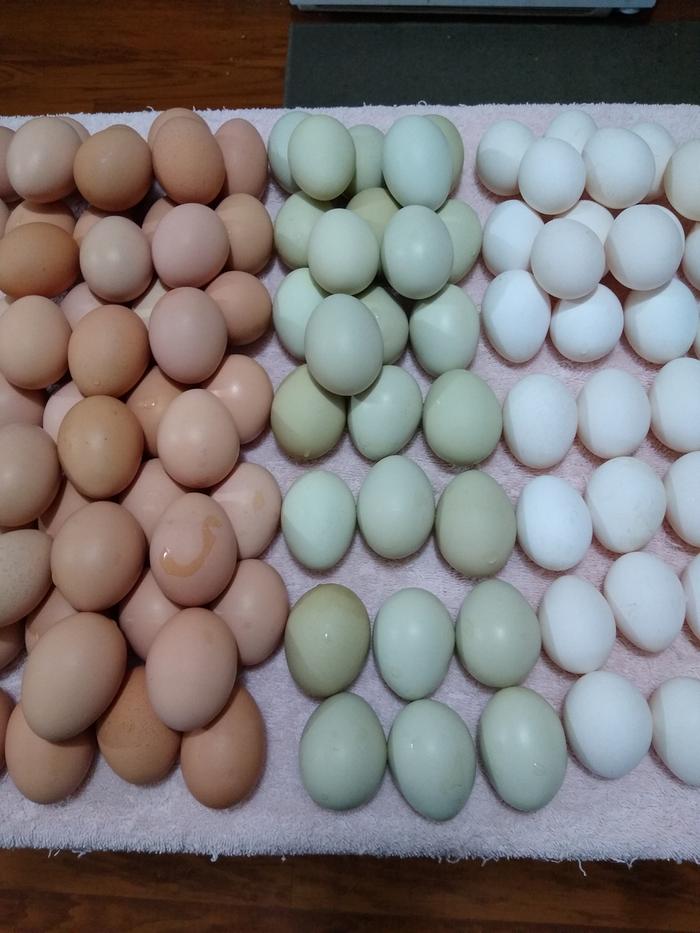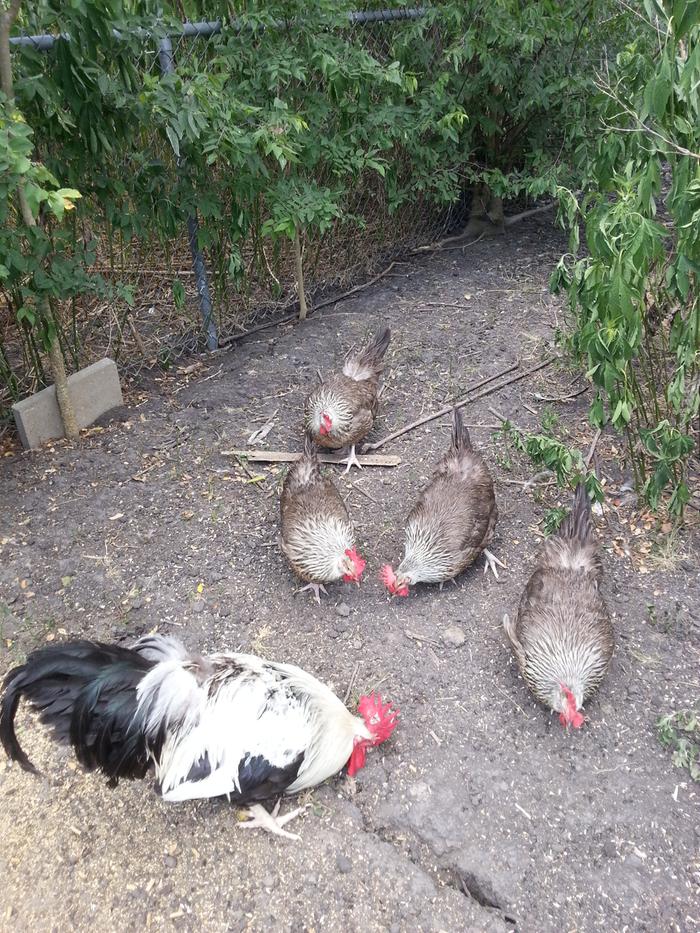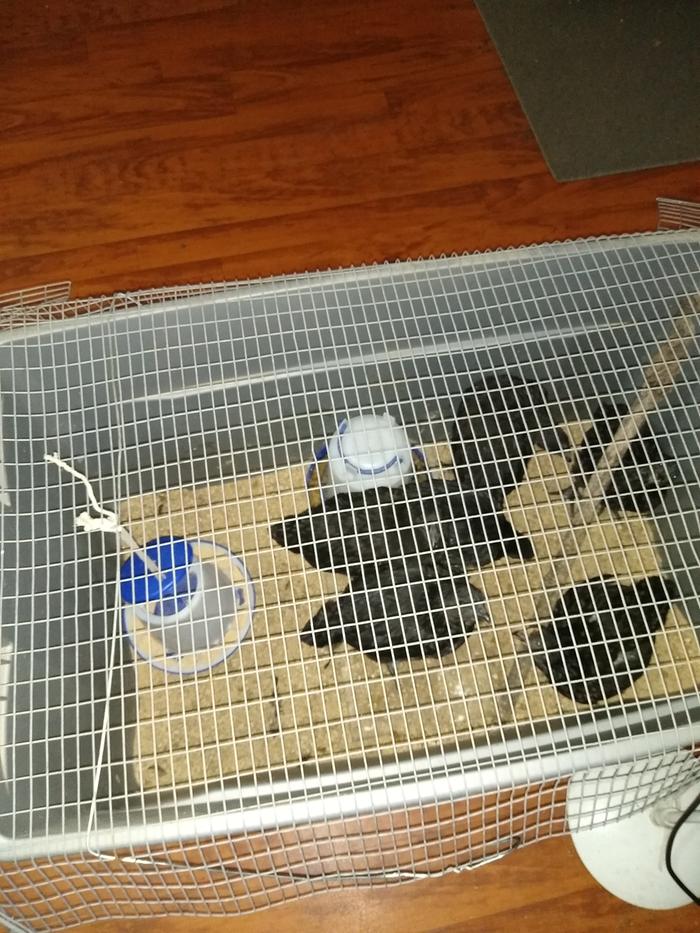
 1
1




“Action on behalf of life transforms. Because the relationship between self and the world is reciprocal, it is not a question of first getting enlightened or saved and then acting. As we work to heal the earth, the earth heals us.” ~ Robin Wall Kimmerer
 3
3




 keep with it. I will warn you that Chickens can be addicting. I was going to start with a few... and that ended up being 32 chickens. Then a greenhouse for them in the winter, and this spring I've been dealing with broody hens hatching out some chicks. It just kind of kept growing
keep with it. I will warn you that Chickens can be addicting. I was going to start with a few... and that ended up being 32 chickens. Then a greenhouse for them in the winter, and this spring I've been dealing with broody hens hatching out some chicks. It just kind of kept growing 
"When the whole world is running towards a cliff, he who is running in the opposite direction appears to have lost his mind." C.S. Lewis
Visit https://themaineingredient.com for organic, premium dried culinary herbs that are grown, processed, and packaged in the USA.
 3
3




You are what you eat.
 1
1




Matt McSpadden wrote: I am far from an expert, so I hope someone else who is an expert will weigh in, but I wanted to take a stab at relieving your fears. In my opinion, she does not sound like she is in any danger. My gut is that she has bonded to you the way a chick would bond to its mother.
From your description it does not sound like it, but generally chicks peep in a "panicky" way when they are cold, hungry, or thirsty. It wouldn't hurt to double check food, water, and heat. Some breeds can be pretty loud just when they are "talking", but I'm not familiar with Easter Eggers or Salmon Faverolles to know how loud they tend to be.
It sounds like you are off to a good start keep with it. I will warn you that Chickens can be addicting. I was going to start with a few... and that ended up being 32 chickens. Then a greenhouse for them in the winter, and this spring I've been dealing with broody hens hatching out some chicks. It just kind of kept growing.
C West wrote:with my chicks, as long as i can see that they are eating, drinking, and pooping there's not much I worry about with their activity or behaviors before they "grow up" unless it's a really obvious problem like flesh wounds (which I haven't personally encountered). If they're too cold they will bunch up together, if they're too hot they will lay down with wings starting to spread away from body and pant, adjust heat in these situations, I keep the heat lamp at one edge of the brooder so they can move into the warm zone and away into the cooler zone to self regulate.
As for size, there is natural variation in size. Unless you have some very serious way to be sure - there is always the chance a single chick of a different breed snuck into your flock (and/or it could be a rooster). I once ended up with a single white leghorn in with a group containing 3 other breeds of large colorful layers, as they matured it became 100% obvious that she was different in many many ways, this explained not only her different size, but also very different temperament. I now keep Icelandics which vary in size and temperament from hatching on throughout maturity.
My advice is enjoy the chicks, don't worry too much and as they grow up most of the questionable chick stuff sorts itself out - especially once they start crowing.
congrats on the new birds!
“Action on behalf of life transforms. Because the relationship between self and the world is reciprocal, it is not a question of first getting enlightened or saved and then acting. As we work to heal the earth, the earth heals us.” ~ Robin Wall Kimmerer
 3
3




 2
2




Ellendra Nauriel wrote:I had a chick who was a "Momma's Girl" like that. She was also the smartest one and the first to try new foods. She's 5 years old now and still my favorite. And she knows it, too!
I'd say give her cuddles when you can, and put a screened lid on the brooder when you're not going to be nearby.
“Action on behalf of life transforms. Because the relationship between self and the world is reciprocal, it is not a question of first getting enlightened or saved and then acting. As we work to heal the earth, the earth heals us.” ~ Robin Wall Kimmerer

 1
1




Heather Sharpe wrote:We brought home eight chicks (Easter Eggers and Salmon Faverolles) a week ago. Mostly they seem to be doing great, eating well, being super active and growing all kinds of feathers. There is one Easter Egger I am a little worried about. She is extremely active and very good at foraging. She has caught tons of worms and bugs when we take them on brief field trips to the yard. She was also the first to figure out dust bathing. But she is always chirping loudly if I am away from their brooder and calms down a bit when I show up. Whenever I open the door, she always tries to jump up on me and seems to want cuddles. She also jumps up when I'm away, maybe looking for me? She just always sounds so panicky. And she seems a little lighter weight compared to the others. Maybe she's burning off all her energy jumping and calling? Even when I go over to check on her, she seems super focused on me and doesn't go back to eating or whatnot.


There is nothing so bad that politics cannot make it worse. - Thomas Sowell
Everything that is really great and inspiring is created by the individual who can labor in freedom. - Albert Einstein







 1
1




There is nothing so bad that politics cannot make it worse. - Thomas Sowell
Everything that is really great and inspiring is created by the individual who can labor in freedom. - Albert Einstein
 2
2




Trying to achieve self-reliance on a tiny suburban plot: http://gardenofgaladriel.blogspot.com











G Freden wrote:The first time we raised chicks in our kitchen, I was sick to death of their noise. They were so LOUD! I was so glad when they were old enough to go outside for good. Then a few years and batches of chicks later, one of our hens went broody so we gave her some eggs to hatch instead. I then learned that loud cheep actually means "MUM! Where's my mum? MUUUMMMM!!" They only make it when separated from their mother; their happy/relaxed call is just a soft little peep.
However, some chicks are just louder than others; our little broody hen raised some brown Leghorns one year and we named that batch The Cheeps because that's all they did--I was glad Cookie was looking after them, not me!

There is nothing so bad that politics cannot make it worse. - Thomas Sowell
Everything that is really great and inspiring is created by the individual who can labor in freedom. - Albert Einstein
 1
1




Kristine Keeney wrote:Howdy!
Welcome to the wonderful world of chicken keeping!
The first ones are always special and will color your opinion of chickens forever after. Trust me. Been there. Haven't written the book, yet, but may eventually. (It's actually become a bonding thing for me and my Mother-in-law because we can "talk chickens" for hours.)
I LOVE Salmon Faverolles. Haven't raised any myself, but they are close relatives of the Dorking family (all those 5 toed chickens are so cool!), and I love the coloration. Right now, our only white/tinted egg layers and 5 toed chickens are the Dorkings, which will make it easier when I start hatching from our flock. Beautiful birds. (They don't pine for the fjords, though.)
Easter Eggers are mutts. Now, the hatcheries I have been working with do have varying genotypes in their flocks. It can help, but you also need to keep in mind where your chicks come from. The good and the bad - I have gotten Easter Eggers that are very true to the Ameraucana phenotype and are brilliant chickens, and I have 2 from a different hatchery with a similar muff setup but different coloration who a year younger, are smaller, more active, and more brave/bold. For whatever reason all of my Easter Eggers seem to lay green eggs, and only in three or so colors, so there's a thing that's interesting.
........
Your Easter Egger, being smaller and "lighter" than her clutch mates is probably just more egg laying focused. She also has more of that "too smart" thing going. She will be more of a cuddle bird, and will, more likely than not, lay more eggs than her clutch mates.
“Action on behalf of life transforms. Because the relationship between self and the world is reciprocal, it is not a question of first getting enlightened or saved and then acting. As we work to heal the earth, the earth heals us.” ~ Robin Wall Kimmerer
 1
1




“Action on behalf of life transforms. Because the relationship between self and the world is reciprocal, it is not a question of first getting enlightened or saved and then acting. As we work to heal the earth, the earth heals us.” ~ Robin Wall Kimmerer

|
I carry this gun in case a vending machine doesn't give me my fritos. This gun and this tiny ad:
Freaky Cheap Heat - 2 hour movie - HD streaming
https://permies.com/wiki/238453/Freaky-Cheap-Heat-hour-movie
|






